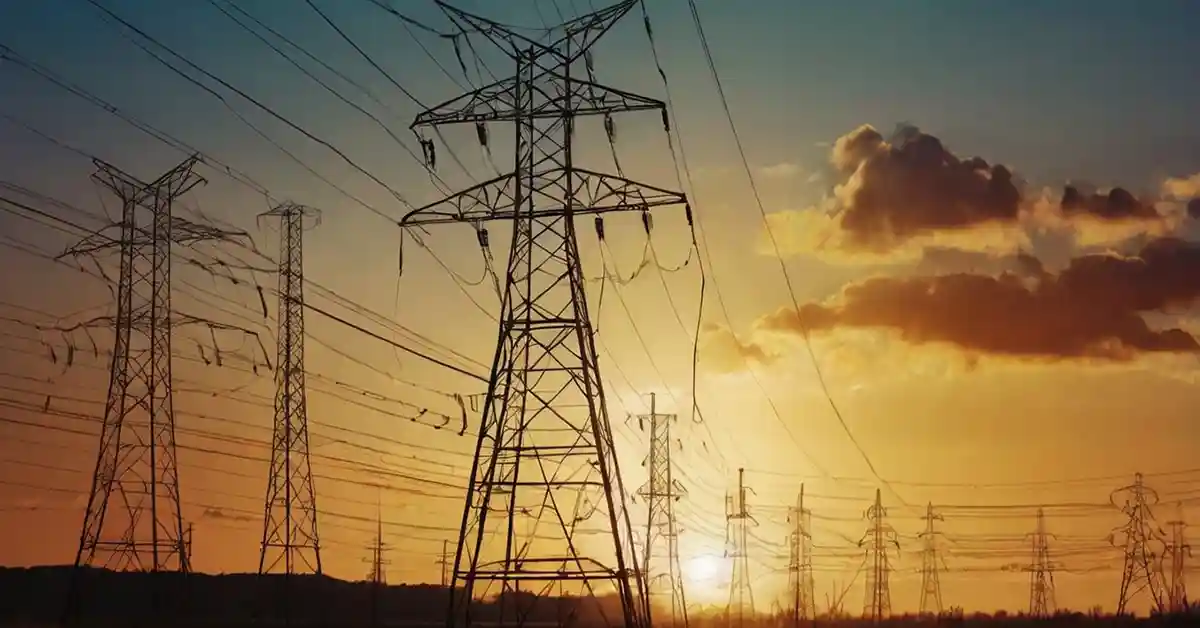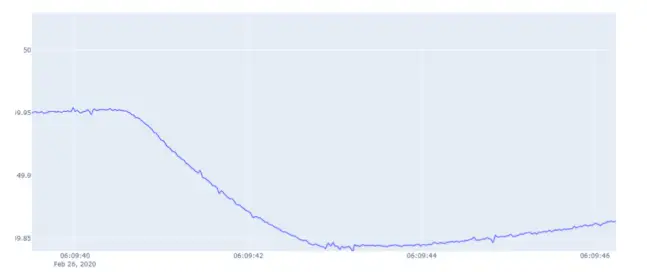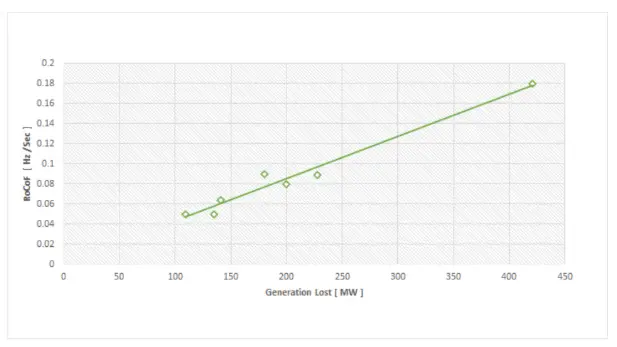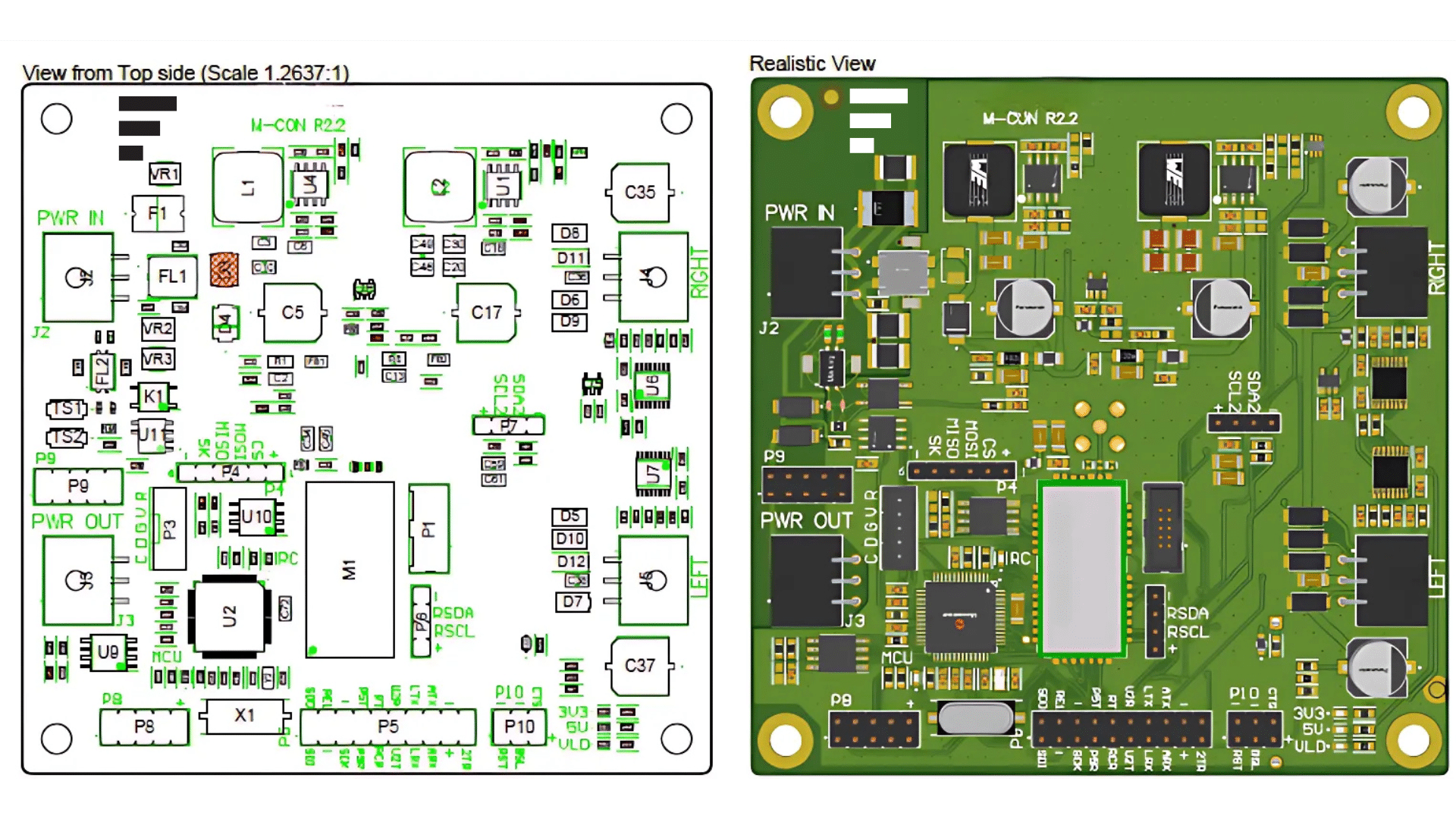
Such frequency data can be measured at high resolution providing electrical grid system data insights when this high accuracy data is combined with data analysis.
Trip Detection
In the event of a power generation trip, a loss of power supply, connected generators act as primary responders. Their response depends on their electrical proximity and size, but each machine will decelerate. This deceleration converts their stored inertia to electrical energy. After a couple of seconds, the turbine governors increase generation according to the frequency decline. And sometime after that further centralized control commands are issued following these.
While system frequency variations occur constantly, detecting a generation trip (or any sudden imbalance) is possible through detecting a more rapid rate of change of frequency (RoCoF) than typical.

Figure 1: Generation Trip at Ballylumford visible as a frequency drop
Power Loss Estimation
Frequency response may be modelled by extension of the swing equation [1] that governs rotor motion of a synchronous machine and adopting the low order model reduction as detailed by Anderson [2]. Assenkamp [3] goes further to define Initial RoCoF in relation to a power imbalance.

This tells us the initial RoCoF is proportional to the power lost in such an event. This relationship is illustrated here by plotting recent generation trip losses [4] against the RoCoF.

Figure 2: Recent generation trips illustrating relationship between RoCoF and Generation Loss
System inertia is an important consideration in this relationship, which is inversely proportional to the RoCoF. But its importance is greater at a system level, as inertia counters against higher rate of frequency change and protects the system from instability. As the Irish electrical system is rapidly transitioning from conventional power sources towards renewable sources, a low inertia grid is approaching.
For information about data insight services we can offer, contact us below!








